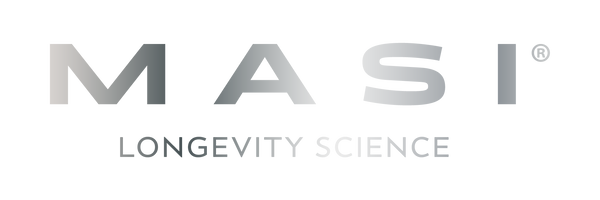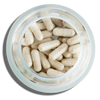
When we dive into the world of health and longevity, two compounds often steal the spotlight: NMN and NR. Both have been hailed as the fountain of youth, promising to turn back the clock on aging. But what sets them apart? It's a question we've all found ourselves pondering as we navigate through the myriad of supplements available.
At first glance, NMN (Nicotinamide Mononucleotide) and NR (Nicotinamide Riboside) may seem similar, both being precursors to NAD+ — a vital molecule that plays a crucial role in our cellular health. However, the devil's in the details, and understanding their differences is key to unlocking their potential benefits. Let's embark on this journey together, unraveling the mystery behind NMN and NR.
Key Takeaways
- NMN (Nicotinamide Mononucleotide) and NR (Nicotinamide Riboside) are both precursors to NAD+, a crucial molecule for cellular health, but they differ in molecular size and metabolic pathways. NMN is larger and must be converted into NR before it can increase NAD+ levels, while NR can directly participate in NAD+ production.
- Despite their similarities, NMN and NR have distinct benefits and absorption processes due to their differences in molecular size and the pathway to NAD+ conversion. NR's smaller size may offer a more straightforward route to NAD+ supplementation.
- Research into both NMN and NR is ongoing, with NR currently leading in human clinical trials. These studies underscore NR's effective role in raising NAD+ levels, potentially making it a more established option for those looking to enhance cellular health and longevity.
- Both NMN and NR show promise in supporting various aspects of well-being, including energy metabolism, healthy aging, cognitive function, and heart health by boosting NAD+ levels. However, more research is needed to fully understand their mechanisms, benefits, and long-term impacts on human health.
- Future discoveries and ongoing research will further clarify the differences between NMN and NR, helping individuals make more informed decisions about their health strategies and supplement choices.
Understanding NMN and NR
When we delve into the realm of anti-aging and cellular health, two compounds often steal the spotlight: NMN (Nicotinamide Mononucleotide) and NR (Nicotinamide Riboside). Both of these molecules play pivotal roles in our bodies by acting as precursors to NAD+, a vital molecule that's crucial for a myriad of cellular functions. Understanding the difference between NMN and NR is not just about knowing their structures; it's about grasping how they can potentially enhance our well-being and longevity.
NMN and NR share a common goal: increasing NAD+ levels in our body. However, their pathways in achieving this are what sets them apart. NMN, for instance, is a larger molecule that needs to be converted into NR before it can be utilized to produce NAD+. This doesn't imply that NMN is less effective; it merely suggests that its journey to bolster NAD+ levels is a bit more complex. On the other hand, NR can directly participate in the NAD+ production process due to its smaller molecular size, making its pathway somewhat more straightforward.
The interest in NMN and NR spans beyond academic curiosity. Researchers are continuously probing into how these compounds can combat aging, improve energy levels, and enhance overall cellular health. Their potential benefits are not just confined to the laboratory; they're making waves in the wellness community, prompting individuals to consider them as part of their health regimen.
|
Property |
NMN |
NR
|
|---|---|---|
|
Molecular Size |
Larger |
Smaller |
|
Pathway to NAD+ Production |
Needs to be converted into NR |
Directly participates in the process |
|
Primary Benefits |
Combat aging, improve cellular health |
Similar to NMN, with potential for easier absorption |
It's essential to note, however, that while both NMN and NR show promise in their ability to elevate NAD+ levels and support health, more research is needed to fully understand their mechanisms and long-term impacts. The journey to unlocking the full potential of these compounds is ongoing, and staying informed is key to making educated decisions about incorporating them into our health strategies.
What is NMN?
Nicotinamide Mononucleotide, or NMN, is a compound that has sparked significant interest within the scientific community and beyond due to its potential in enhancing cellular health and longevity. It's a key precursor to Nicotinamide Adenine Dinucleotide (NAD+), a vital molecule that plays a crucial role in cellular metabolism, energy production, and DNA repair. As we age, NAD+ levels naturally decline, which is why NMN’s ability to boost these levels is so compelling.
NMN works by undergoing a transformation in the body; it's converted into Nicotinamide Riboside (NR) before it can be used to create NAD+. This process, although complex, highlights NMN's importance in the fight against aging and cellular deterioration. The conversion step does add an extra layer to its mechanism of action, making its pathway to enhancing NAD+ levels a bit more intricate compared to NR.
Research into NMN has shown promising results, particularly in animal studies. These studies suggest improvements in energy metabolism, increased longevity, and better overall health. However, it’s important to note that most of these findings are in the preliminary stages, and more research is necessary to fully understand how NMN can benefit humans.
The fascination with NMN is not without merit. It has been identified as a potent enhancer of NAD+ levels, which are crucial for various cellular functions. The intrigue around NMN lies not only in its ability to potentially slow down the aging process but also in its capacity to improve health spans, offering a more vibrant life in our later years.
As we delve deeper into the benefits and functionalities of NMN, it’s clear that its role in promoting cellular health cannot be understated. The science behind how NMN contributes to NAD+ production, despite the need for conversion to NR, underscores its potential as a significant player in the realm of anti-aging and wellness.
What is NR?
Before we dive deeper into the differences between NMN and NR, let's clarify what NR is. Nicotinamide Riboside (NR) is a form of vitamin B3, similar to niacin and nicotinamide, but with distinct properties that make it a standout in the world of health and wellness. Like NMN, NR plays a crucial role in boosting levels of Nicotinamide Adenine Dinucleotide (NAD+), a vital molecule for our cellular health and metabolic processes.
NR has gained significant attention for its ability to efficiently increase NAD+ levels in the body. This is paramount because NAD+ levels naturally decline with age, leading to various age-related health issues. By elevating NAD+, NR supports energy production, DNA repair, and the activation of sirtuins, proteins that are believed to play a key role in extending lifespan and enhancing health.
One of the advantages of NR over other forms of vitamin B3 is its unique pathway to NAD+ production. It's considered more direct and efficient, which may explain its popularity in dietary supplements aimed at boosting health and longevity. Clinical studies have shown that consuming NR supplements can significantly increase NAD+ levels in humans, underscoring its potential as an anti-aging and wellness agent.
However, it's important to note that despite its benefits, NR, like NMN, is still under extensive research to fully understand its long-term effects on human health. The current evidence points to NR being a powerful tool in our arsenal for combating the effects of aging and promoting cellular health, making it an exciting area for future discoveries.
In our quest for optimal health and longevity, understanding the properties and benefits of compounds like NR is crucial.
Key Differences Between NMN and NR
When exploring the landscape of cellular health and anti-aging supplements, understanding the distinct characteristics of Nicotinamide Mononucleotide (NMN) and Nicotinamide Riboside (NR) is crucial. Both compounds play pivotal roles in boosting Nicotinamide Adenine Dinucleotide (NAD+) levels, but their journey from ingestion to effect showcases significant differences.
Firstly, the molecular structure of NMN is larger compared to NR. This difference in size influences how each compound is absorbed and utilized by our bodies. NR has a more direct pathway to NAD+ conversion which may contribute to its efficient processing and potential benefits. On the other hand, NMN must undergo a conversion process to become NR before it can contribute to increasing NAD+ levels. This extra step in the metabolic pathway could influence the speed and efficiency of its impact on cellular health.
Another key distinction lies in the current body of research surrounding these compounds. While both have been studied for their effects on health and longevity, NR has been the subject of more extensive human clinical trials. These studies have demonstrated NR's capability to effectively raise NAD+ levels in humans, suggesting its promising role in supporting vital cellular functions. NMN, while supported by promising preclinical data, is still catching up in terms of human-based research.
|
Characteristic |
NMN |
NR
|
|---|---|---|
|
Molecular Size |
Larger |
Smaller |
|
Pathway to NAD+ |
Converts to NR before NAD+ increase |
Direct increase in NAD+ |
|
Research |
Emerging human trials |
Extensive human clinical trials |
In the supplement market, these differences impact how NMN and NR are incorporated into health strategies. Consumers seeking to enhance their cellular health must weigh these factors alongside their personal health goals and any existing medical advice. As the body of research grows, the nuances between NMN and NR will become even clearer, allowing for more informed decisions in our pursuit of optimal health and longevity.
Potential Benefits and Applications
When it comes to the benefits and applications of NMN and NR, we're looking at a variety of potential advantages that span across health, wellness, and longevity. Both compounds are hailed for their capability to boost NAD+ levels which plays a pivotal role in several biological processes.
Firstly, both NMN and NR have shown promise in enhancing energy metabolism. This is a game-changer for those of us seeking to improve our physical performance and endurance. The increase in NAD+ levels helps in optimizing the function of mitochondria, the powerhouse of our cells, thereby potentially providing us with that much-needed energy boost.
Secondly, there's the aspect of aging. Our body's ability to naturally produce NAD+ declines with age. By supplementing with either NMN or NR, we might be able to counter this decline, thereby supporting healthy aging. Research suggests that boosted NAD+ levels could help maintain DNA repair and cell vitality, essential factors in slowing the aging process.
Third, cognitive health is another area where NMN and NR are being closely studied. The brain is a heavy consumer of energy, and maintaining optimal levels of NAD+ could support cognitive functions, memory, and overall brain health.
Lastly, NMN and NR are being explored for their potential to support heart health. Enhanced NAD+ levels can contribute to cardiovascular health by supporting blood flow and reducing oxidative stress.
It's essential to consider that while the research into NMN and NR is promising, it's still evolving. We're on the brink of understanding how these compounds can be best utilized for our health and well-being. Whether it's improving energy metabolism, supporting healthy aging, enhancing cognitive function, or promoting heart health, NMN and NR offer a range of potential benefits that could play a pivotal role in our health strategies.
Conclusion
We've explored the fascinating world of NMN and NR, two compounds at the forefront of cellular health research. Both have the potential to revolutionize how we approach aging, cognitive function, and overall well-being. With their ability to boost NAD+ levels, they offer a promising avenue for those looking to enhance their health in a meaningful way. As research continues to unfold, we're excited to see how NMN and NR will shape the future of health optimization. It's clear that the journey into understanding these compounds is just beginning, and we're here to navigate it alongside you, offering insights and updates every step of the way.
Frequently Asked Questions
What are Nicotinamide Mononucleotide (NMN) and Nicotinamide Riboside (NR)?
NMN and NR are compounds that enhance cellular health by increasing levels of Nicotinamide Adenine Dinucleotide (NAD+), a crucial molecule for energy metabolism and cell vitality. These compounds show promise in various health-optimizing areas including aiding healthy aging and cognitive function.
How do NMN and NR support healthy aging?
NMN and NR support healthy aging by maintaining DNA repair and cell vitality. This is primarily achieved through their role in boosting NAD+ levels, which declines with age, thereby potentially mitigating some aging processes.
Can NMN and NR improve energy metabolism?
Yes, by increasing NAD+ levels, NMN and NR can enhance energy metabolism. This may lead to increased energy levels and improved metabolic functions, contributing to overall vitality and well-being.
What are the potential benefits of NMN and NR for cognitive function?
NMN and NR may enhance cognitive function by supporting neuronal health and function. This is attributed to their role in promoting healthy blood flow and reducing oxidative stress, factors important for maintaining cognitive abilities.
How might NMN and NR contribute to heart health?
NMN and NR potentially contribute to heart health by reducing oxidative stress and supporting endothelial function, which helps maintain healthy blood flow and pressure. This could be beneficial in maintaining cardiovascular health.
Is research on NMN and NR conclusive?
Research on NMN and NR is ongoing. While they have shown promise in various health-related areas, more comprehensive studies are needed to fully understand their benefits, optimal dosages, and long-term effects.
Who can benefit from taking NMN and NR?
Individuals looking to optimize their health, specifically in the areas of aging, cognitive function, and metabolic health, might benefit from NMN and NR supplementation. However, consulting with a healthcare provider before starting any new supplement is advisable.


